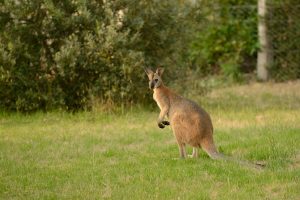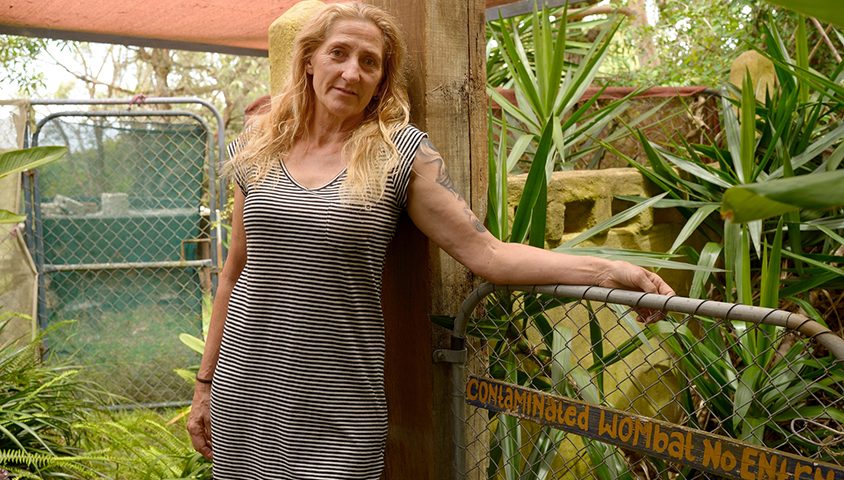Helen Velden is one of many East Gippslanders happy to roll up their sleeves and get dirty in an effort to help conserve our native wildlife.
“We live in an environmentally sensitive area near Cape Conran,” explains Helen. “I have a belief that we are caretakers of the land and we need to share it with the creatures around us, so that there is wildlife left for our children to see in the future.”
Helen became involved in animal rescue and rehabilitation during her mid-20s: “I found a baby brushtail possum near Hanging Rock (in Woodend). I picked it up, put it in a sock, rang a vet, received advice and started caring for it.”
After moving to East Gippsland, Helen turned her property into a wildlife sanctuary and started to build a variety of enclosures. At one stage, her property had pens for wombats, young kangaroos and wallabies, and a 14-metre long cage that housed a wedge-tailed eagle. Her role in conservation covered rescue, rehabilitation and release. Taking on all three aspects of wildlife care takes time and money, but as Helen explains, “Some people elect to just be a rescuer and take the creature to a shelter.”

Red-necked wallaby, Marlo, in East Gippsland. These beautiful creatures are experiencing a gradual loss of their natural habitat.
Apart from the cost of building pens, there are vet bills to be paid, milk supplements and various accessories, like heat pads, to buy. “You go without,”says Helen. “Once you start, you can’t stop.” Time-wise, raising and rehabilitating is very demanding. “If you look after a pinky (baby wallaby) and you work, you have to take that pinky with you. If you go out to dinner, it goes with you. It can be exhausting. I have slept on the floor next to a pinky to make sure it stayed warm or didn’t overheat (on a heat pad) and was fed every two hours.”
There were many instances when people contacted Helen and handed over their rescued charges, for example, a white-lipped snake that had suffered a cat attack, a bruised wedge-tailed eagle, a highly stressed masked owl, an injured potoroo and an orphaned red-necked wallaby joey.
Although Helen cared for a variety of animals, she ended up specialising in the common wombat. “They are just so animated, so naughty and comical. I have a real soft spot for them,” she chuckles.
Over the years, Helen trained several local people to be wildlife carers. She explained that she helped induct them into the rehabilitation of all wildlife by sharing her knowledge and experience, mostly through phone support. However, some gained ideas when they visited her property and viewed her pens. “They are all registered wildlife shelters now. Also, one has specialised in wombats. Another (has specialised) in macropods, only roos. Another takes most creatures, but mainly wallabies — both red-necked and swamp.” Registration is done through the Department of Environment, Land, Water and Planning (DELWP).
Helen also explained that prospective conservationists could take heart, because these days there are government grants available for people who want to create a shelter, and become involved in native wildlife conservation. Also, wildlife organisations such as Healesville Sanctuary, provide training and support. Wildlife Victoria provides advice and information to wildlife rescuers to help take the pressure off valuable resources such as local vets and shelters. In extreme cases, local vets are very generous with their time and often give free consultations, and even the police are willing to assist in these animal rescues.
Helen’s dedication has inspired many to become involved in wildlife conservation in East Gippsland. If you want to learn about wildlife rehabilitation, volunteer with an experienced and licensed shelter such as Wildlife Victoria.


